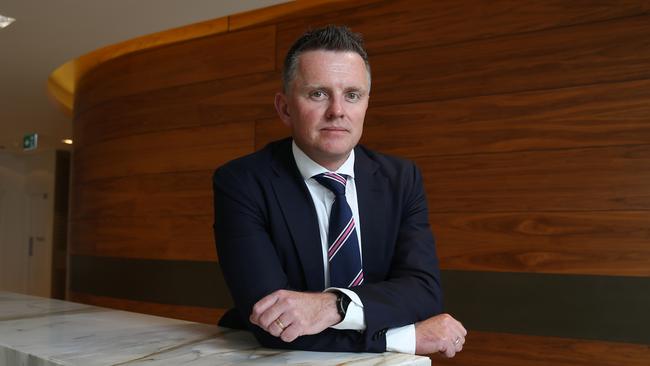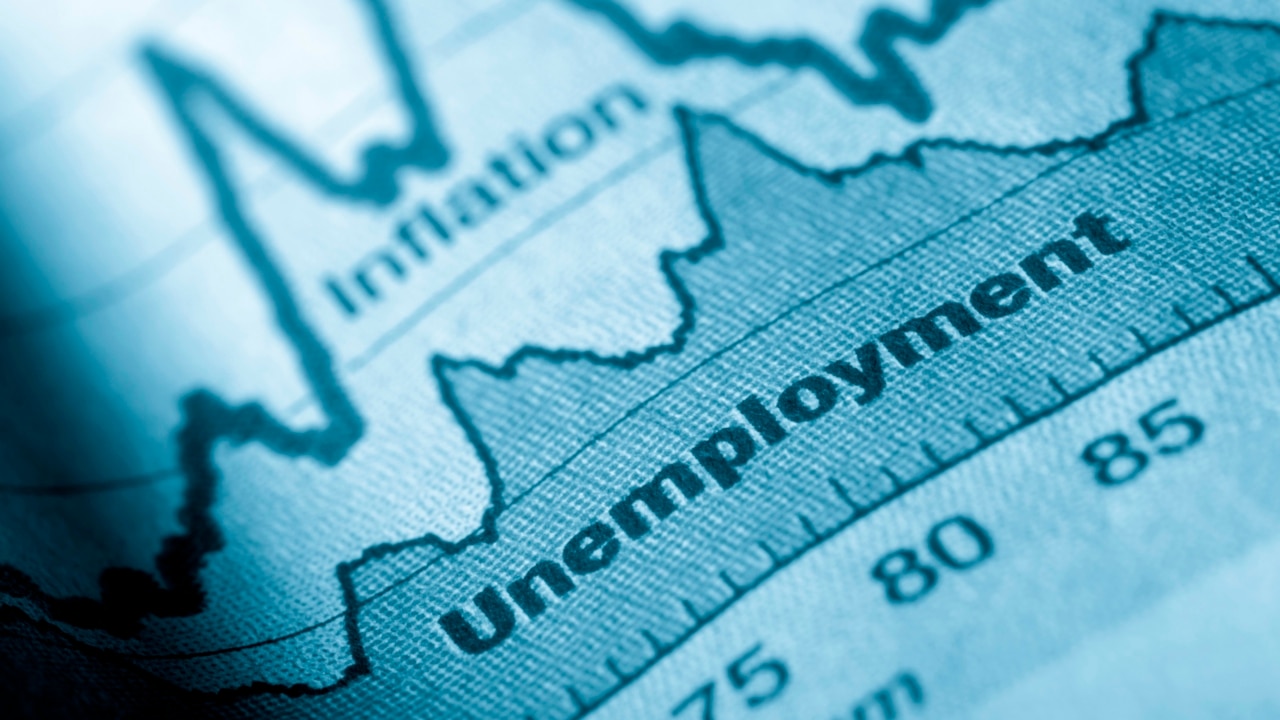Rate hike jitters rock markets but ASX rebounds before RBA speech
A restart of rate hikes would complicate the stock market outlook with banks, consumer discretionary and housing-related stocks in the firing line, according to Morgan Stanley.

A restart of rate hikes would complicate the outlook for Australia’s stock market with banks, consumer discretionary and housing-related stocks in the firing line according to Morgan Stanley.
After the latest inflation blowout in CPI data for May, economists at Citi, Deutsche, UBS, Judo Bank and Morgan Stanley said the RBA will lift the cash rate to a near 13-year high of 4.6 per cent after its August meeting.
Most said rate cuts won’t start until well into 2025.
The local stock market was briefly rocked by rate hike jitters on Thursday, the S&P/ASX 200 falling as much as 1.7 per cent to a four-week low of 7654.2.
But in an exceptional show of strength, the ASX rebounded massively throughout the day.
It closed down 0.3 per cent at an intraday high of 7759.6, leaving important support intact.
The intraday sell-off came as Australia’s 10-year bond yield jumped 20 basis points to a four-week high of about 4.43, on inflation jitters and a rise in European and US bond yields.
The Australian dollar hit a two-week high of US66.89c as the chance of the RBA hiking in August hit 50 per cent.

The stock market also recovered somewhat before a highly-anticipated speech by RBA Deputy Governor Andrew Hauser at the Citi A50 Australian Economic Forum on Thursday evening.
While the RBA board considered lifting interest rates at its meetings in May and June after March quarter inflation data exceeded its forecast and the monthly CPI indicator came in higher than economists expected, Morgan Stanley said a rate hike was “required” after the latest blowout.
“There has been no disinflationary progress all year, across all measures, and the RBA’s June-quarter core inflation forecast is very likely to be exceeded,” said Morgan Stanley economist Chris Read.
“Combined with policy settings that are only modestly restrictive, this sets up an August hike.”
Australia’s monetary policy remains less restrictive than other economies, even with rate cuts starting in North America and Europe, and the RBA’s forecasts are yet to fully account for a fiscal impulse that will turn meaningfully positive in the second half of 2024.
While a significant amount of subsidies taking effect in July will artificially lower headline inflation into the target band and put some downward pressure on core measures, these impacts will be temporary and imply an equal degree of upside pressure in 2025, Mr Read noted.
After its June meeting the Board said recent data “reinforced the need to remain vigilant to upside risks to inflation”, it was determined to lower inflation to its target band, and “will do what is necessary to achieve that outcome.”
In her press conference, RBA governor Michele Bullock said the RBA’s path to lowering inflation without lifting unemployment appeared to be “getting a bit narrower”.
Read said the RBA would likely remain hawkish after an August hike, but a further tightening would likely require “meaningful pass-through of fiscal stimulus”, which would be less likely after an August rate hike, and an extended period of steady rates would be most likely.
In his view, the RBA will hike in August unless the next monthly CPI indicator and employment data are surprisingly weak and there’s a meaningfully dovish shift by central banks overseas.
The latest UBS Evidence Lab survey this week found consumers were growing more resilient in their spending patterns as higher job security and rising asset prices countered cost-of-living challenges.
The survey suggested that the large tax cuts worth $23bn, or almost 1 per cent of GDP, that are due to start next month were likely to be largely spent rather than saved by households, UBS said.
A $60bn jump in federal and state government spending in the coming financial year will add to inflation and risks keeping interest rates higher for longer, Westpac said last week.
For the stock market, a further RBA rate hike and hawkish outlook is likely to cause extended weakness in domestic trading conditions and cutbacks in spending that would “challenge” second half earnings, according to Morgan Stanley equity strategist, Chris Nicol.
“This complicates the outlook and comes at an inopportune time for equities, as whilst inflation is remaining stickier and in services at least still rising, the evidence of some slowdown in domestic facing sectors, like housing activity and discretionary consumption, has been building,” he said.
“Recent trading updates showing weakness at the top line and margins.”
Mr Nicol warned that investors’ current sanguine approach to credit-quality risks, evident in elevated bank trading multiples must also be reconsidered, bleaker housing activity signals will “continue to flash” and the Aussie dollar should strengthen.
“For much of this year we have seen a consensus bias to want to look through any impact from tighter monetary policy and jump any earnings gaps to the next stage of the cycle,” he added.
“Should our additional rate hike call become consensus, the potential harder landing that comes with that is not priced into earnings multiples in our view and will pressure Index direction.”
In terms of positioning, Morgan Stanley’s model portfolio is Underweight Australian banks, consumer discretionary and housing-linked stocks, while its key Overweight sectors are resources, non-bank financials, global healthcare stocks and selected quality growth companies.
Macquarie Equities warned that a cluster of profit warnings that started in May is set to continue given weak forward orders, high labour cost growth and rising transport costs pressuring margins.




To join the conversation, please log in. Don't have an account? Register
Join the conversation, you are commenting as Logout